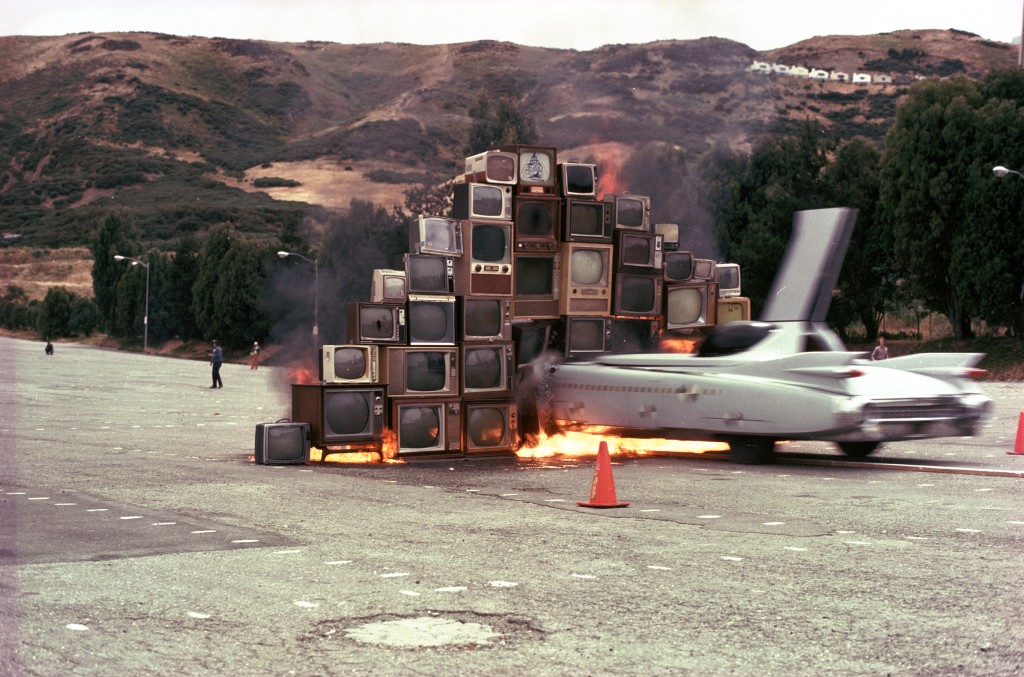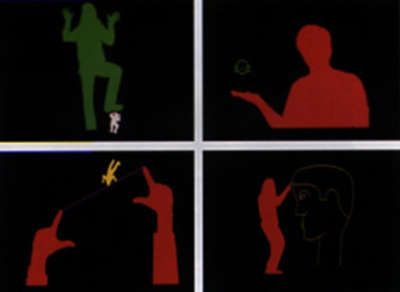Ant Farm
Ant Farm was an avant-garde application of architecture, graphic arts, performance, environmental design practice and other aspects of hyper-futurism, founded in San Francisco in 1968 and ended in 1978 by Chip Lord and Doug Michel.The works made by Ant Farm made a big progress among previous works mentioned in the class is that it made good use of the dissemination of the media, especially the mass media, the icon culture at that time, television, to inform and influence more people than before.
During studying the ideas of Ant Farm, “hippie” is considered one of core concepts for Ant Farm. Browsing the interpretation in Wikipedia, hippie is a member of a counterculture, originally a youth movement that began in the United States during the mid-1960s. And the celebration “the summer of love” brought hippie to the life of teenagers in San Francisco. The beliefs of hippies are joy, nonviolence, to free themselves from societal restrictions, to find new meaning in life, to question authority. And one of the significant movements of them is utopian socialism to form communes to live as far outside of the established system. It seems interesting that Chip Lord said at the conference, “the difference between hippie and Ant Farm in 1960s is new technology.” But I think most importantly is both of them made good use of mass media. In the article ‘The root of the 1960s communal revival’ written by Timothy Miller,
“The rural hippie communes were media attention-grabbers, full of photo opportunities, wild anecdotes, and the weirdest-looking people most Americans had even seen. Press coverage was massive from about 1969 through 1972.”

It is obvious that Ant Farm is influenced by hippie counterculture greatly when talking about its effort to redefine the way we see, heard and believe in daily life, such as cultural icons and the concept or structure of architecture always presented in works. What’s more, Ant Farm also develops its characteristics by utilizing the ironic humor, focusing on an awareness of the media impact on people’s view and urging the introspection of American kitsch culture.
Besides, Ant Farm is also influenced by the trend of “underground” like underground newspaper. It appeals to “underground architecture” that works against the existence that materials use in works are inflatable or movable and opposition to the Brutalism.
Media Burn
Media Burn was displayed on July 4, 1975 in San Francisco and Ant Farm termed it “ultimate media event.” The main part of this event is a “Phantom Dream Car,” a reconstructed Cadillac car was driven through a wall of burning TV sets. It presented the collision of two American prominent cultural symbols in 1960s: automobile and television. And the drivers inside the car were dressed as astronauts, I suppose that the character of astronauts and the image of car symbolize the futuristic, a powerful vision in the future world that people can be liberated from the control of the cultural production at that time.
Besides, I think of the arrangement introducing an independent speech by artist-president representing as Johnny F. Kennedy on July 4 as a savvy means, because it made good use of the news spot which is also condemned in this event on public, “the monopoly of mass media”, television, which shapes the world we see and think. The gimmick of the date, American Independent day and the character of President, Johnny F. Kennedy, who is first elected on television and also dead in front of his citizens through television easily grabbed the eyes of the public and the mass media. In this speech, it appealed to the public to reflect on the impact of mass media in our daily life in this public performance as well as through the television and encouraged people not to be controlled by the information that the mass media fed and to put their foot through the television screen.

It impresses me that just at the beginning period of the population of television, artists started to ponder over the influence of the centralized thought delivered from the mass media, because the aspect it chose or the interpretation it made of every event could greatly shape or distort the picture or the thought of the event in audience’s mind. Back to the previous topic we discussed in the class, the position of artists in the new media field is obvious in Media Burn that they go outside the inherent way of thinking and own a sensitive awareness of our daily life, and most importantly, they take actions to arouse everyone’s awareness.
“It’s a visual manifesto of the early alternative video movement, an emblem of an oppositional and irreverent stance against the political and cultural imperatives promoted by television, and the passivity of TV viewing.”–recorded in the article




